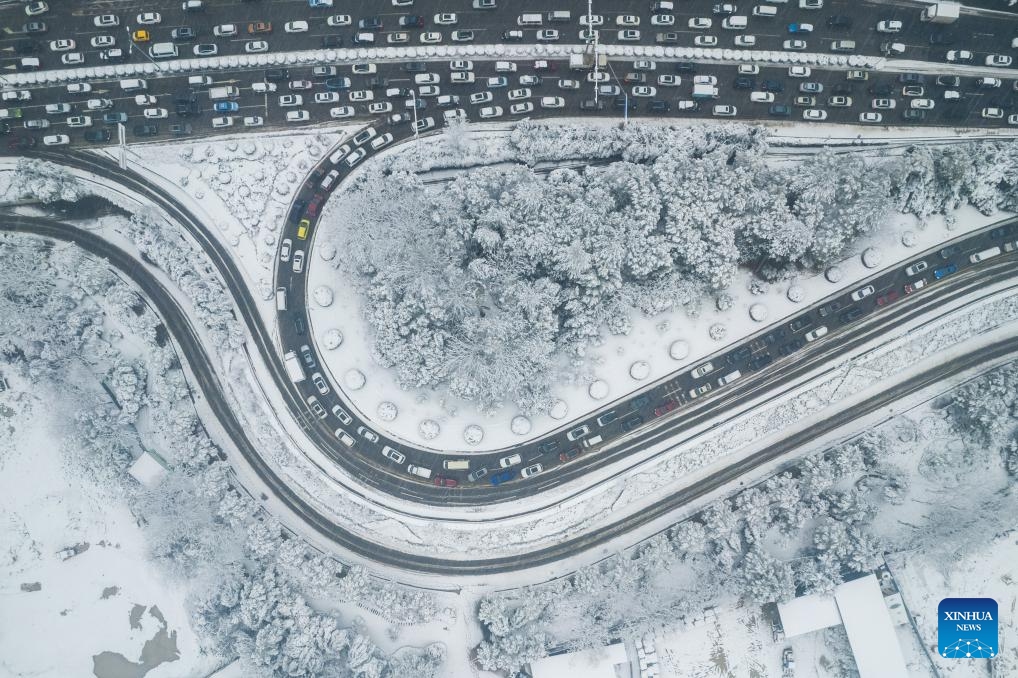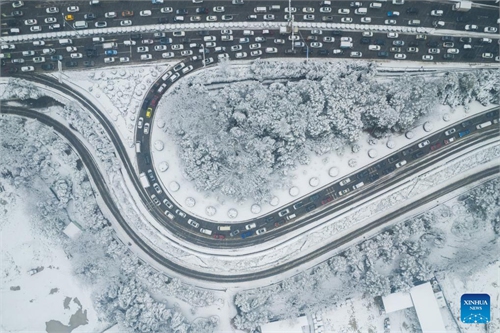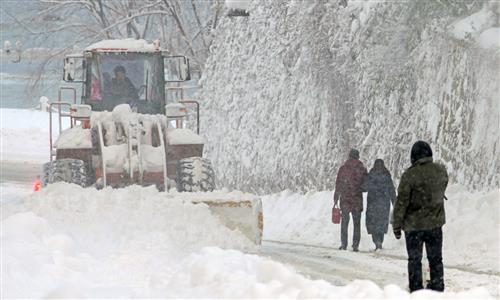Widespread, persistent freezing storms forecasted to affect Spring Festival travel rush in Henan, Shandong and Hubei provinces

An aerial drone photo taken on Jan. 22, 2024 shows vehicles running on the road in Changsha, central China's Hunan Province. Changsha saw its first snowfall of 2024 from Sunday night to Monday morning(Photo: Xinhua)
Widespread and persistent freezing winter storms including blizzards expected to last the longest period since this winter and affect the largest area across the central and eastern parts of China during the peak of Spring Festival travel rush have been forecasted by China’s meteorological authorities, expecting to disrupt public transport.
According to the National Meteorological Center (NMC), the central and eastern parts of China will suffer from continuing freezing stormy weather conditions between January 31 and February 5, ahead of this year’s Spring Festival. Approximately 10 provinces such as Henan, Shandong, Hubei are expected to experience heavy snowfalls, five provinces including Henan, Hubei, Anhui, Hunan and Guizhou, will experience freezing rain, the southern parts of the Yangtze River will see rainstorms accompanied by thunder and lightning. The NMC has forecasted that this round of rain and snow will be the longest since this winter with the largest range of area to be affected.
Since the rain and snow will crossover with Spring Festival travel rush and given that the affected areas are key transportation hubs in Central China, where rainy and snowy weather will significantly disrupt major transport routes. The meteorological authorities suggest the public to properly plan their journeys based on weather forecasts for safety concerns.
The accumulated snowfalls in Henan, Shandong and Hubei are expected to come close to or surpass historical averages for the same period in previous years.
However, the duration, the intensity of low temperature, and the range of areas likely to plunge into freezing temperatures are not as severe as low-temperature rain, snow, and freezing which hit the southern part of China in early 2008. The scope and intensity of snowfall in areas to the south of the Yangtze River will also be weaker than the snowstorm happened on January 21 and 22, with raining as the main form of precipitation.
In January of 2008, an extremely rare and severe weather event characterized by prolonged, widespread low temperatures, rain, snow, and freezing weather conditions swept through the southern part of China, which significantly disrupted road, rail and air transportation, leading to extensive traffic congestion and trapping of passengers.
A total of 5.8 million passengers across the country were stranded at the railway stations between January 25 and 31 in 2008. In Guangzhou, South China’s Guangdong Province, 400,000 passengers were stranded for 11 days at the railway station. About 40,000 police officers were deployed to sustain orders and evacuate the passengers.
Global Times


